#topelius
Text
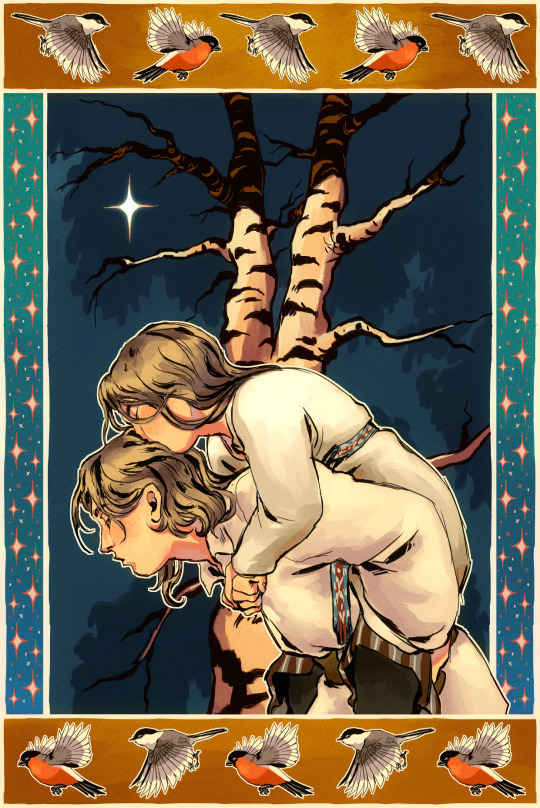
koivu ja tähti
or the birch and the star, is a finnish fairytale written by zachris topelius about two siblings, taking place during "isoviha" (great wrath) or the russian occupation in finland in 1713 to 1721
the siblings are abducted to russia as children and run away ten years later in order to make a journey to find their home in finland, guided by two birds and a memory of their homestead birch tree with a star shining through it's leaves
#finnish folklore#finnish fairytale#koivu ja tähti#topelius#i do a lot of mythology stuff but i wanted to move onto some fairytales too even if there's not much!
477 notes
·
View notes
Text
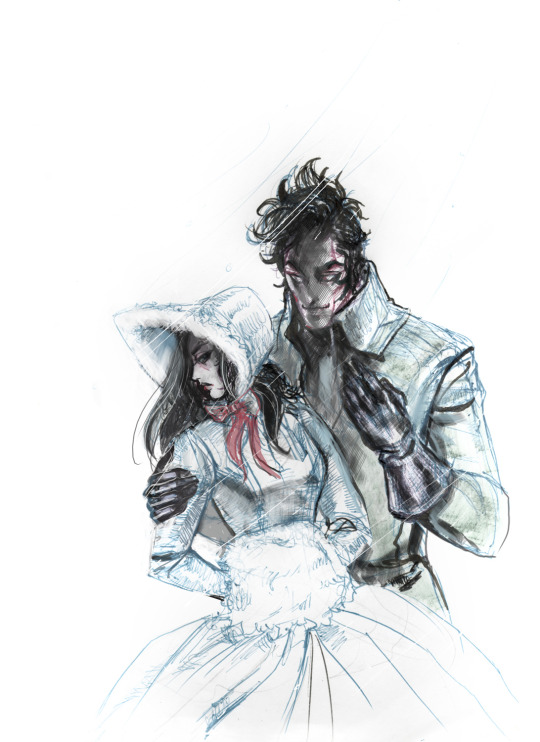
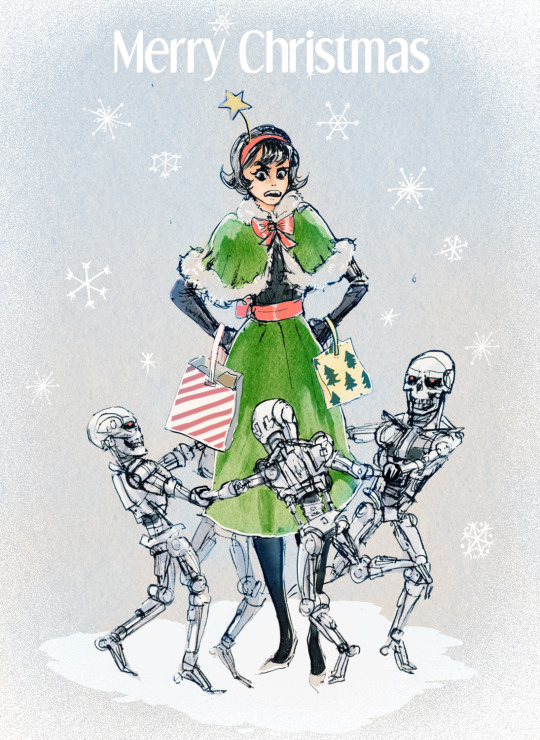



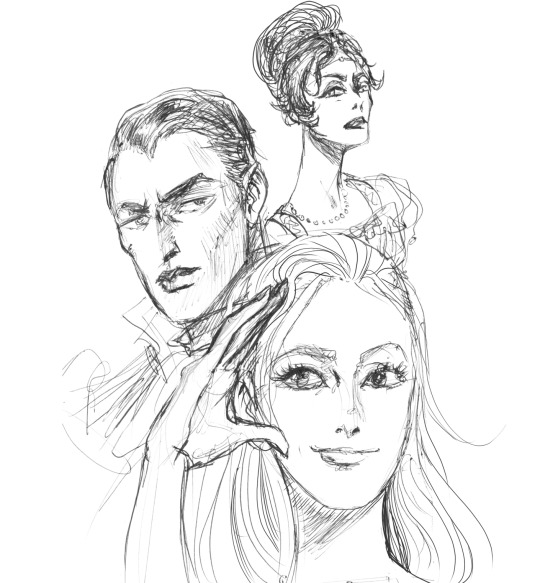

(The first pic: Scene from the Linnaisten kartanon vihreä kammari, Z. Topelius).
"Ettekö siis käsitä, ihana neiti, että teidän täytyy olla omani Kohteliaisuuden mukaisesti olisi minun ehkä pitänyt huokailla muutama viikko tai kuukausi jalkainne juuressa, voittaakseni niin kalliin saaliin, mutta suoraan sanoen, minulla ei ole aikaa siihen.
6 notes
·
View notes
Photo

#nykarleby #topelius #tree #light #ifyouleave #shadow #timeless_streets #photographyeveryday #sociallandscape #soulofstreet #architecturephotography #palepalmcollection #fromstreetswithlove #woofermagazine #earthescope #finearephotographer #conceptualphotography #outdoors #artisticphotography #dreaminstreets #visualcreators #visualsgang #architecture #surrealphotography #contemporaryphotography #great_captures_minimal #streetgallerymagazine #subjectivlyobjective (på/i Nykarleby) https://www.instagram.com/p/CeSnRXbINjX/?igshid=NGJjMDIxMWI=
#nykarleby#topelius#tree#light#ifyouleave#shadow#timeless_streets#photographyeveryday#sociallandscape#soulofstreet#architecturephotography#palepalmcollection#fromstreetswithlove#woofermagazine#earthescope#finearephotographer#conceptualphotography#outdoors#artisticphotography#dreaminstreets#visualcreators#visualsgang#architecture#surrealphotography#contemporaryphotography#great_captures_minimal#streetgallerymagazine#subjectivlyobjective
0 notes
Text
Superstitions, in my OPM? Pshaw.
Some japanese superstitions because we're in psychic sisters arc and shit boutta get supernatural. But also because Saitama had a bad feeling due to his intuition.


Breaking a comb or the cloth strap of a geta wooden sandal is an omen of misfortune
A significant portion of Japanese superstition is related to language. Numbers and objects that have names that are homophones (Dōongo / Dōon Igigo (同音語 / 同音異義語, lit. "Like-Sound Utterance" / "Like-Sound Different-Meaning Utterance")) for words such as "death" and "suffering" are typically considered unlucky (see also, Imikotoba). Other superstitions relate to the literal meanings of words. Another significant part of Japanese superstition has its roots in Japan's ancient pagan, animist culture and regards certain natural things as having kami. Thus, many Japanese superstitions involve beliefs about animals and depictions of animals bringing about good or bad fortune.

Number 9 is sometimes pronounced ku — with the same pronunciation as agony or torture. Combs (kushi) are rarely given as presents as the name is pronounced the same as 9
There are six numbers that are considered unlucky in the Japanese culture and they are 4, 9, 13, 42, 43, 49.
Number 39 sounds like...
さん (san) く、きゅう (ku, kyuu)
which translates to literally
"Thank you"
Hmmm....
*something something that personality type often believes in supernatural*
The lucky numbers in the Japanese culture are Number 7 which is considered lucky because of its importance in Buddhism and number 8 which is considered because of its shape.
I already made meta about Genos and maneki neko.
Use of the Maneki Neko or "lucky cat". Many businesses such as shops or restaurants have figures of such beckoning cats, which are considered to be lucky and to bring in money and fortune.
That a lot of superstitious references already.
If a funeral hearse drives past, one must hide one's thumbs in a fist. The Japanese word for "thumb" literally translates as "parent-finger". Hiding it is considered protection for one's parents. If this is not done, one's parents will die

Kind of distantly resembling funeral hearse but eh. Anonymous, black car and black suits.
You probably see red a lot in Japan, especially on the shrine gates and temples. It is believed that red can protect people from evil and disaster.
However, do not buy anything red to your friends as a house warming gift. Japanese think red associate fire, which might bring bad luck such as fire accidents to the new house.
Just when I had thought about Saitama's new door being automatically locked and wondering about what if there was an emergency and someone with without superhuman strenght wanted to get in.
"Oh" moment.


Feeling superstitious yet?
I mean, there was also a housefire in Mob psycho and Mob almost lost it when he saw fake bodies of his family dead there.
Fake memories could do the same thing...
Black represents a powerful and tough image, as you can see the black belt in Judo and Karate athletes. It also represents evil and destruction, as Japanese often describes (same as the West), evil people have a “black heart”. Especially when used alone, black represents mourning, and is often worn to funerals. However, with the growing popularity of Western conceptions of black-tie events, it has been a clot of formality too.
White
White is the color of snow, which can mean starting on a blank page, returning to the roots, and treating someone coldly. This peaceful color stands for purity and truth but can also denote death and mourning. Pearl white is the most popular color in cars in Japan.
When Saitama's cape used to be red, instead of white. Haa.
Red
In Japan, red is generally associated with public phones, cherries, and paint. The color red in Japanese culture denotes strength, passion, self-sacrifice, and blood. It is the color that “gets the blood flowing.” Red bean rice is served on auspicious occasions. Many phrases such as “embarrassment to death,” “growing red with anger,” “deficit spending or losses,” or “complete stranger” are denoted with the Japanese word for red, which is “aka.”
Yellow
The color yellow symbolizes sunshine and nature in Japan. It is a popular color in flowers, clothes, and gardening. It is also the color of railway crossings and school children’s caps because it increases visibility and indicates warning and caution. In Far East Japan, people consider yellow a sacred color, but in the West, it denotes treachery. The Japanese term for someone “having a yellow beak” means one who is inexperienced, whereas someone with a “yellow voice” means the shrill voice of women and kids.
Suddenly I am thinking about Mob getting hit by a car on the same day when Forte got hit by a car in manga. Because Mob pushed the kid out of the way because the kid was listening and playing on their ds instead of being aware of their surroundings. Just like how Forte was unaware of his surroundings because he was listening to music.
HMMM. Intentional?
I dunnooo.... awfully convenient timing. :D
Now for something a bit more out there. Because I think there is a spirit bird reference in opm with all those sparrows and in cover of 170.
A finnish christmas song from a poem made by Zacharias Topelius.
Specifically about a sparrow spirit bird. And we're bout to head to the last chapter of this year.
youtube
Snow has covered the flowers in the vale,
The lake has frozen in the frost of winter.
The little sparrow has eaten his summer food
The lake has frozen in the frost of winter.
On the stairs of a little cabin was a dear girl:
“Come, sparrow, with joy, take a seed from me!
It's Christmas, my homeless and unhappy sparrow,
Come here with joy, take a seed from me!”
The dear sparrow with joy now flew to the girl:
“Gratefully I shall take the seed from you!
One day God wants to reward you.
Gratefully I shall take the seed from you!”
“My child, I am not a bird from this earth,
I am your little brother, I came from Heaven.
The tiny seed you gave for the poor,
was given to your little brother, from the Land of Angels.”
Kimmo Korteniemi, textsFor years, one of the most beloved Christmas carols in Finland has been "Sparrow on Christmas morning", written by Zacharias Topelius and composed by Otto Kotilainen (1868-1936).
The series of events described in the poem is touching in its simplicity. It is Christmas: a modest and apparently Finnish cottage is surrounded by a wintry landscape. A sad little girl is standing on the stairs of the cottage when she sees a hungry sparrow in the yard. The sparrow's orphanhood and polity inspire pity in the girl, and she offers the bird some seeds. The sparrow accepts the gift and promises that God will one day reward her for her good work. At the same time, the sparrow reveals himself to be a heavenly guest, the girl's little brother.
The events of the poem had a real background, which is most clearly visible in Topelius' Swedish-language original text. Whereas the K.A. Hougberg translation speaks only of a little brother who 'came from heaven', the Swedish text specifies that the little brother died the previous spring: 'Jag är din lilla bror, som dog bort i våras.'
The little brother was the Topelius son Rafael, who had died in his father's arms on his one-year birthday on 12 May 1858. As was often the case, Topelius took his pain and sorrow out on his artistic creation, writing. A poem about a sparrow on Christmas morning, in memory of his little boy, was published in the Christmas issue of the Eos children's magazine in 1859, a year and a half after Raphael's death.
The deaths of his children shocked Topelius and contributed to the strengthening of his Christian convictions from the 1860s onwards. Indeed, in the autobiographical notes written by the ageing Topelius, the recollections of Mika, Raphael and Rosa are tinged with both severe self-reproach and religious humility.
The author, who had entered old age, felt at least partly responsible for the deaths of his children. He thought that Mika's illness had been triggered by a swimming trip with her father. In Rafael's case, he had thoughtlessly installed a ventilation valve in the wall of the house, through which the cold flowing in might have caused the boy's fatal lung catarrh. Similar doubts accompanied Topelius' account of Rosa's death.
But above all, Topelius saw his children's deaths as a powerful address from God, a shaking reminder of the limits of art-making.
The idea of deceased child taking the form of a bird in the poem "Sparrow on Christmas Morning" also appears in some of Topelius' other stories. For example, in the fairy tale 'The Birch and the Star' (1852), two little birds are adopted by siblings returning from exile. As the story unfolds, it is revealed that the birds that are leading the way are angels sent by God, the souls of the little sisters sleeping in their graves under the birch tree in the yard.
How were such interpretations possible for Topelius, who was known for his Christian beliefs?
Do the poems conceal an explicit doctrine of the transmigration of souls?
Topelius' mystical and romantic tendencies are particularly evident in his views on nature. Topelian nature is not dead matter, but brimming with life and spirit, personified forces, mysteries, symbolism and poetry.
Topelius often justified the spirituality of nature with Christian arguments: it was about God's active activity and presence in creation. But, especially in his fairy tales and stories for children, he also used many figures from pre-Christian folklore, such as trolls, elves, fairies and fairies, as instruments for the animation and personification of nature.
Awakened Garou has pointed ears, btw.


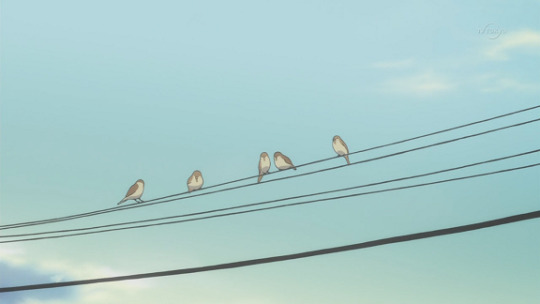


That tiny tiny white blob on the background atop the rooftop? A white bird possibly. And we know who's spirit we saw in 169.
--
Murata also made that one pointed message about Orochi and ancient stone mask on twitter.
That's all I got for now.
#opm#one punch man#saitama#opm meta#mob psycho spoilers#opm wc spoilers#superstition#opm manga panels#opm anime screencaps#zacharias topelius#spirit bird#mourning#Youtube
14 notes
·
View notes
Photo

16.07.2022_12:13 PM
#photograph#Finbarr O'Dempsey#Fact & Fable#Zacharias Topelius Memorial#Gunnar Finne#Helsinki#Finland
3 notes
·
View notes
Text
Fältskärns berättelser
Bovil (Bo Vilson) tecknade serien Fältskärns berättelser, publicerad i veckotidningen Levande livet (1942-44). Serien blev sedan återpublicerad i Illustrerade klassiker nr 200 (1969).
Bovil (Bo Vilson) tecknade serien Fältskärns berättelser, publicerad i veckotidningen Levande livet (1942-44). Den tecknade versionen var skapad med manus av Knut Bengtsson, under pseudonymen Kåbeson, efter Zacharias Topelius roman.
Ett urval källor
Omslag till Levande livet nr 12, 1942, där den nya serien (sedan två nummer tillbaka) presenteras. ©Åhlén&Åkerlund
Serien gick i Levande Livet…

View On WordPress
#Bo Vilson#Bovil#Fältskärns berättelser#Göte Göransson#Illustrerade klassiker#Kåbeson#Levande livet#Zacharias Topelius
0 notes
Text
I finally found a Finnish version of one of my fave Christmas hymns (Veni, veni Emmanuel) 🥰🙏
#I love solemn and sad Christmas hymns#The more depressing the song the better#My all time fave is Varpunen Jouluaamuna - A song about a girl's dead brother who comes visit them as a bird#It's even more sadder when you know that the poem it's based it was written by Topelius who had lost his son when he was just a baby 😭😭
0 notes
Text
A sparrow on christmas morning
A coat of snow has swallowed up flowers of the valleys
Frozen still are waves of lakes, frozen closed are galleys
A sparrow of summer past flies across the overcast
Frozen still are waves of lakes, frozen closed are galleys
At the door of one small hut stands a girl with wheat
"Come on over, little bird, come on over, eat!
After all it's Christmas, you should not go hungry thus
Come on over, little bird, come on over, eat!"
Gladly the swallow swooped in to the girl with wheat
"Gladly I will take your gift, and gladly I will eat
God forgets not those who will not forget the poor
Gladly I will take your gift, and gladly I will eat"
"I am not what you believe, not a bird of this Earth
I am your small brother who died soon after birth
Seed that you offered me, a beggar with feathered wing
Was given to your brother, who died in late last spring"
Zacharias Topelius, 1859, translated to english by yours truly
(partially from the finnish translation by Konrad Alexis Waaranen)
90 notes
·
View notes
Text
i have a fun idea
reblog and add your favourite christmas song that isn't in english (translations of songs originally in english are fine)
here's mine
youtube
Sylvian joululaulu is a poem written (originally in swedish) by Zacharias Topelius in 1853, which was then composed into a song by Karl Collan. it's about a poet spending christmas in italy, but longing for home in finland. there are many, many arrangements of this song, but i've chosen this one because personally i prefer to hear it performed by a choir
26 notes
·
View notes
Photo

MWW Artwork of the Day (6/27/22)
Albert Edelfelt (Finnish, 1854–1905)
Queen Bianca (1877)
Oil on canvas, 96.5 x 75.5 cm.
Ateneumin Taidemuseo, Helsinki
"Queen Bianca" stemmed from Albert Edelfelt's longstanding dream of illustrating Finnish history. History painting was long considered the most esteemed artistic genre, and leading figures in the Finnish art world were encouraging up-and-coming artists to take on historical subjects. This work is based on a tale by Zacharias Topelius. The painting depicts a historical person, Queen Bianca, who was the spouse of Swedish King Magnus Eriksson and who arranged a marriage between her son Haakon (here sitting on her lap) and Princess Margareta of Denmark. This resulted in a union between Sweden and Denmark that lasted from 1397 to 1453. While bouncing her son on her knee, Queen Bianca sings to him of these plans. The enduring appeal of the work undoubtedly lies in the maternal love it conveys, a subject that awakened the public's interest amidst all the war and battle-themed paintings on display.
For more of this artist's work, see this MWW gallery/album:
https://www.facebook.com/media/set/?vanity=TheMuseumWithoutWalls&set=a.3509503849154959
277 notes
·
View notes
Text
We can't have a constructive discussion on the Kalevala and its relationship with cultural appropriation without first seeing it for what it truly is - a multicultural hybrid that pulls from many sources.
And claiming otherwise is proof of how little people know about this topic, the contents found within the book, the origin and history of the project, and the cultures and tradition the book borrows from.
There are misconceptions (and a bad game of telephone) at play when it comes to this topic: first one being that Kalevala "belongs" to finns, and the second one being that it "belongs" to karelians. Neither of these ideas are correct nor are they based in reality. This false narrative is solely driven by emotions rather than fact on both sides of this argument, and it leaves out everyone else whose tradition and beliefs are used in the mythos of this story book, including ingrians and ostrobothnians, such as myself. My home is the starting point of the entire project, including runes and concepts which were collected and documented before the birth of karelianism. Without ostrobothnia there would be no Kalevala.
The start of the project is never discussed in a truthful manner and I just can't imagine why. I hope it stems from ignorance and lack of research, because honestly I've mostly seen people parrot the same exact unsourced claims without anyone fact-checking what they're actually saying. Finns have historically not been a monolith and to this day some still aren't, for example many ostrobothnians would proudly declare that they weren't finns up to the 1900s. It's also wrong to simply divide Finland into west and east, as this is a bit too simplistic and it creates a binary that doesn't exactly exists.
The truth of the matter is that there isn't just one culture, ethnicity, country or peoples who can claim the Kalevala for itself. Nor many the "characters" included, such as Väinämöinen, who is a prominent figure in the runes and beliefs of multiple cultures, such as mine. He doesn't belong to anyone nor can anyone claim him, especially when you consider the fact that his role and nature differs depending on who you ask. Trying to hog a widespread concept to one peoples/culture is ignorant at best and erasure at worst.
It's downright depressing to see the "Lönnrot came up with (ostrobothnian deity)" and "finns didn't think their own culture was exotic enough" lies spread around every website. Lönnrot was first familiarised with concepts and ideas Väinämöinen, Ilmarinen, Louhi, Pimentola/Pohjola (to name a few) from published ostrobothnian runes and lexicons, namely Mythologia Fennica. He was familiar with these concepts long before he ventured to Kainuu and Viena, he knew what he was looking for thanks to all the published works he was able to get his hands on. In fact the main reason he went eastward was because he thought he wouldn’t be able to find new material from the documented places in Ostrobothnia, and thus decided he might be able to find more material for his “longer narrative” elsewhere (1). After learning that merchants from Vuokkiniemi had recently visited Zacharias Topelius in Uusikaarlepyy/Nykarleby, he decided to head there next.
Even Viena, where most runes were collected, has a unique culture due to being settled by karelians in the 1500s, and ostrobothnians in the 1600s (many of them rune singers). No doubt that pieces of the indigenous sámi (most of whom were pushed northward by the arrival of karelians) also persist in the culture of the region (possibly along with savonian and tavastian settler influence) (2). Just because these populations assimilated into karelians doesn't mean they shouldn't be mentioned when discussing the culture of Viena, and of course Kalevala.
While I understand the frustration around this subject, and I do think much of it is justified, it's extremely disheartening to see just how easily attempts at conversation are shot down by both finns and karelians, and how quick people are to completely disregard and shun other cultures and peoples involved... and for what? I understand the anger, but it won't take us anywhere. It’s detrimental to push down others when attempting to uplift one’s own culture.
I truly wish people did more research on this subject and started to actually respect and acknowledge the cultures involved - and I mean all of them. The ignorance and staggering lack of research concerning this topic is unbelieveable.. and of course extremely saddening.
Footnotes:
He explained this in the foreword of old Kalevala. (X)
Karjalan sivistysseura - website’s History section on the settlement of Viena. (X)
I find these two sources the most important to the conversation; however everything I’ve just said is quite easy to research, especially if you speak finnish and swedish. These are not the only sources either, and everyone familiar with this topic knows how skewed this conversation is online, especially on tumblr and twitter.
#kalevala#pohjanmaa#ostrobothnia#lonnrot#karelia#<- this is going in the karelia tag cuz karelians spread the most misinformation around this topic along with finns#feel free to reblog and dm me if you're interested in this topic but I'm more than inclined to meet your attitude#my blog is empty rn cuz I've not had time to start it up properly yet but I'll eventually make more posts abt ostrobothnia#there is a lot of misconceptions#to the point of cultural erasure and even appropriation at times
10 notes
·
View notes
Text

adalminan helmi
or adalmina's pearl is a finnish fairytale by zachris topelius about a princess who's given gifts by two fairies as she's born, the first one giving a pearl that will grant her ever-growing beauty, intelligence and wealth, though should she ever lose it then she'll also lose all those things with it until she finds the pearl again
the second fairy's gift is that if she does lose the pearl she'll gain a kind and humble heart instead
it's another fairytale illustration and this was the one story out of finnish fairytales that i probably read the most, and it was a favorite of mine as a kid (it still might be, sometimes it's hard to decide) and i wanna summarize a bit more in detail what happens at least in the version i'm most familiar with under the cut, but there's some other variations of it out there too!
so the king and queen deem that the second gift is worthless bc they'll be having servants around adalmina day and night to make sure the pearl, now fashioned into a crown, never disappears or falls off in the first place (and that the first gifts are better suited for a princess regardless)
as she grows older, she does become more beautiful, intelligent and wealthy but also grows selfish, arrogant and even cruel to the people around her
she's resentful of anyone she thinks dares to be more beautiful, intelligent or wealthy compared to her, even stomping on flowers as "she's the only one allowed to be beautiful"
when adalmina turns fifteen she's grown bored of the castle walls and decides to venture out, coming across a pond
upon seeing her own reflection she can't help but stop and admire it and do so very closely
of course this is when her crown with the magical pearl tips off of her head and falls into the pond, taking all of her gifts with it and leaving her with amnesia
now appearing as a poor peasant girl and not knowing who she is, a terrified adalmina runs into the forest and comes across a cottage where an old woman lives alone
she takes pity on the lost girl and decides to take adalmina in her care if she helps her with herding goats, and adalmina embraces her in gratitude and promises to help however she can
she's then described to be happier than ever before by living a simple life, now surrounded by a glow that's "not born from shine on the surface, but the kind that comes from the inside of anyone with a good heart"
three years pass by, and a prince comes across the cottage in the forest (i think in some versions he's searching for the missing adalmina specifically) and finds himself falling in love with adalmina as he sees her working from a distance
he stops by a pond to have a drink of water and discovers adalmina's pearl in the water, deciding that he'll give the crown to the shepherd girl he saw (again this is different in some other versions where he brings the crown back to the king and queen and it's then tried on all the girls in the kingdom to see who it fits in order to find adalmina as the crown only fits her)
as he places the crown on her head she's revealed to be the lost princess, now restored with all the gifts she had before on top of the kind and humble heart
adalmina returns to the castle to her parents, taking the old woman with her and apologizes to everyone she had hurt
later on she marries the prince and the story ends with "adalmina and her pearl are lovely, but much more lovely is her kind and humble heart, which is more valuable than a pearl"
94 notes
·
View notes
Text

Poems written by Z. Topelius
#my photos#classic academia#light academia#romantic academia#art academia#literature academia#academia aesthetic#classic academia aesthetic#light acadamia aesthetic#romantic academia aesthetic#finnish literature#swedish literature#poetry#bookblr
15 notes
·
View notes
Text

A monument in Vaasa, Finland, honors Finnish writer Zacharias Topelius (1818-1898) who was born in Nykarleby, 76 km north of Vaasa.
4 notes
·
View notes
Text
I was tagged for fuck it friday by @rewritetheending (mwah 💕) but intentionally left it until saturday instead, because! Today my choir released a new EP and I am absolutely going to take the chance to brag about that!
The first and longest song is an epic piece written for our 75-year jubilee by American-Finn Alex Freeman. It uses Galileo's musings about the moon and its phases as the core text and plays a lot with staccatos (absolutely brutal to learn, let me tell you).
The other songs are rediscovered pieces that were written in the 1860's for the very first female voice choir in Finland! I will go into more detail about that under a read more, because there's a lot of really interesting history connected to them! But it's important to know that the women of this choir defied social conventions by performing together, because it was seen as unseemly for women to perform in public at the time.
A last fun fact before the read more: we recorded song #4 (En sommarafton) with our eyes closed the whole way through, just feeling the pulse and ebbs and flows around us.
So! Vårföreningen was a small group of women singing together in the 1860's. They were all of good social standing (and all had attended the school in Helsinki that was available for women at the time, Fruntimmersinstitutet), but despite them all apparently really liking singing together, they only ever had one public performance. The choir was pretty much completely forgotten until researcher DMA Sakari Ylivuori came across mentions of it and some music sheets while researching Thérèse Decker. She was the musical leader of the group (and also sang in it), and finding those notes lead Sakari down the path of learning more about Vårföreningen.
At the time, it was seen as very unseemly of women to perform in public. In letters the group's members wrote to each other there is mention of them having "many enemies but also many friends," and a side note sbout how a nasty story is being spread about the group's members not behaving as is proper in other situations as well. Sakari posits that it's possible the women also felt the societal pressure they had internalised during their upbringing, but be that as it may, Vårföreningen only had one public performance and then officially dissolved by the members' own agreement.
It's very curious how this choir has completely fallen into the shadows of history, because among the composers and songwriters for the choir you can find names like Fredrik Pacius and Zachris Topelius, both very highly regarded men in Finnish society at the time and still among the best-known Finnish composers (Pacius) and poets (Topelius). Topelius' daughter Aino was one of the members in the choir, and from her letters it's emerged that they performed at one of his (dinner?) parties. So it seems like the culture sphere in Finnish society at the time would've been ready to welcome an all-female choir, but society at large, maybe, were not.
Sakari has been able to find and restore 49 songs that Vårföreningen sang, and they are all set to be published both in a book and online for anyone to use as part of the Finnish cultural history database. By clues in letters and diary entries from the choir members, however, it seems like those are only part of a very large repertoire that Vårföreningen's members sang together, and it's quite incredible how such a large piece of cultural history may be lost forever (we're holding out hope that some more notes are found in old storages or something, you never know what some family archives may hold). One of Topelius' best known songs today, En sommardag i Kangasala (Kesäpäivä Kangasalla), turned out to be originally written for Vårföreningen. The score Sakari found was at least a year older than the arrangement for mixed choir that made the song famous, and that makes it even more interesting that nobody knew anything about them.
Being able to sing these songs again, and receiving whatever piece of information Sakari could find about them, has been so incredibly rewarding. Most of them are quite simple compared to some songs we perform today, but bringing a piece of history to life like this is both humbling and very important. Female voice choirs still often have to fight to be taken as seriously as mixed voice or male voice choirs, and women involved in creating art have much more often been forgotten or ignored when people (usually men) wrote about the history they were involved in. That we now can bring some of our own history back into the spotlight feels good. Maybe, like our chairwoman said at the release party today, somewhere a group of women are looking down upon us, smiling and proud of how far female voice choirs have come since they were around.
#just frida thoughts#lyran#fuck it friday#ish#i have a lot of feelings about vårföreningen and I will say even more if prompted
14 notes
·
View notes
Text
Tagged by @/bishopinblue
Are you named after anyone? - Finnish author Zacharias Topelius
When was the last time you cried? - a couple days ago after listening to Euthanasia
Do you have kids? - Nah man
Do you use sarcasm a lot? - I try not to!
What sports do you play/have you played? - I loved playing football and baseball, but I can't anymore these days
What's the first thing you notice about other people? - Vibes, I think
Eye colour? - Green :]
Scary movies or happy endings? - Can I have both? Please?
Any special talents? - I'm a jack of all trades, master of none
Where were you born? - yeah
What are your hobbies? - art, roleplay, doll customization, collecting and video games!
Do you have any pets? - 2 cats and a hamster
How tall are you? - 158cm.
Fave subject in school? - Loved liteature, english, and crafting classes. I loved english since I had to do minimum work there and could just draw all day
Dream job? - Torn between being unemployed and actually working in a small kiosk or cafe.
Tagging anyone that wants to do this!
7 notes
·
View notes